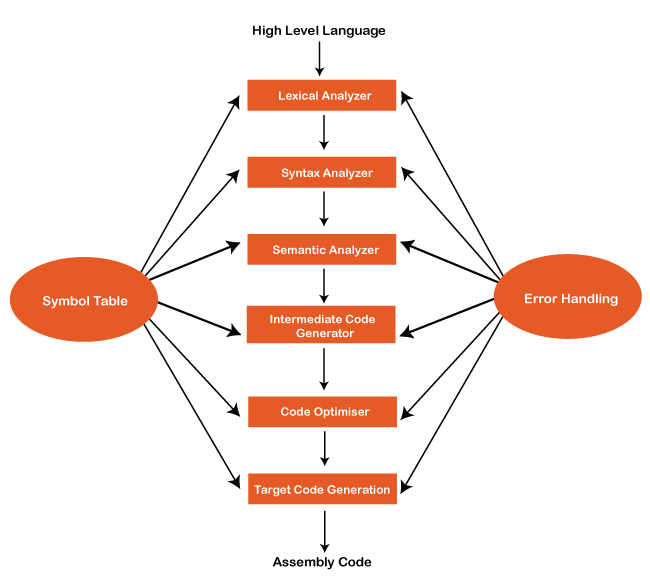

- WHAT IS INPUT BUFFERING IN COMPILER DESIGN FULL
- WHAT IS INPUT BUFFERING IN COMPILER DESIGN VERIFICATION
- WHAT IS INPUT BUFFERING IN COMPILER DESIGN CODE
- WHAT IS INPUT BUFFERING IN COMPILER DESIGN SERIES
WHAT IS INPUT BUFFERING IN COMPILER DESIGN FULL
For a full chip, you will also have IO buffers and IO pads placed outside the core boundary. You may have power routing spaces allocated outside the core boundary. Core boundary refers to the area where you will be placing standard cells and other IP blocks. A top level digital design will have a rectangular/square shape, whereas a sub block may have rectangular or rectilinear shapes. In a real time design, you go through many iterations before you arrive at an optimum floorplan.įloorplan defines the size and shape of your chip/block. This is the first major step in getting your layout done, and for me this is the most important one.Your floorplan determines your chip quality.At this step, you define the size of your chip/block, allocates power routing resources, place the hard macros, and reserve space for standard cells.Every subsequent stage like placement, routing and timing closure is dependent on how good your foorplan is. db files are specified using “set link_library” and the paths where they can be found at “set search_path”.


WHAT IS INPUT BUFFERING IN COMPILER DESIGN CODE
The above snippet of code creates a library with the name “my_design_lib”. Set link_library "* std_lib1.db std_lib2.db" These inputs once read in, will get you started with your database. You will have the clock definitions, false paths, any input and output delay constraints etc. SDC files define the timing constraints of your design. ICC takes a milkyway techfile format, while EDI tools take a technology LEF file. This includes metal widths, spacing, via definitions etc. The rules pertaining to the process you have selected should also be given to the PnR tool. libs may also have cell power information. This liberty format file will have timing numbers for the various arcs in a cell, generally in a look up model. Timing Model – Tools also need a timing model in the form of a.LEF is an ascii file, so go ahead and have a read. Cadence EDI tools use LEF views, which again has only the PINs and Obstructions (blockages) defined. This makes sure that the interconnection between the PINs can be routed automatically and that the routing tool will not route over existing metal/via areas thus ruling out any shorts. FRAM view is a cell view that has only the PINs and metal and via blockages defined. Synopsys tool ICCompiler use “FRAM” views as a PnR abstract. This will have PINs defined, so as to facilitate automatic routing by the tool as per your netlist. Layout Model – An abstract model of the standard cell layout is used instead of the complete layout.For digital layout, you need layout and timing abstracts for these cells. Your netlist will have instantiation of these cells. In digital design, you have a ready made standard cell library which will be used for synthesis and subsequent layouts. I had seen some VHDL and EDIF designs when I started my career, but I have only really worked with Verilog files. Once you choose a process and a library, a synthesis tool will translate your RTL into a collection of interconnected logic gates that define the logic. However, every tool uses pretty much the same flow and even the same format files. I have used both Cadence and Synopsys tools extensively, so those are what I will base my examples on. Let us see what kinds of files we are dealing with here. The first stage in physical design flow is reading in the netlist and the constraints to your tool of choice.
WHAT IS INPUT BUFFERING IN COMPILER DESIGN VERIFICATION
You will do a bunch of stuff here, like floorplanning, placement, CTS, routing, timing closure, physical verification, formal verification etc. Next comes the physical design part of it making your design into a representation of the actual geometries you will manufacture. So, you have completed your RTL, synthesised it and now you have a netlist & constraints. Of course some say synthesis should also be part of physical design, but we will skip that for now. I am going to list out the stages from Netlist-GDS in this session.
WHAT IS INPUT BUFFERING IN COMPILER DESIGN SERIES
This is going to be a series of step-by-step explanation of physical design flow for the novice.


 0 kommentar(er)
0 kommentar(er)
